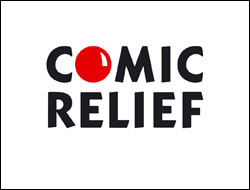Attention Deficit (±Hyperactivity) Disorder is not new, and not news, but as it – or rather they – are mostly associated with children, they are conditions which have an unusual capacity to create moral panic. This usually turns up in terms of: “Is this real, or an artefact of modern diagnostic attitudes?” – or: “Is it right to give medicines to children for behavioural problems?”. And of course: “Is it right to medicate children who are just being naughty”? (This particular one has always irritated me; it makes so many unspoken assumptions I find it difficult to think of a response and keep breathing.)
So this is an area where clear, easily comprehended information is likely to be welcome, right?
 Enter ADHD Voices, an international (i.e. United States & English) project which intends to bring “the perspectives and experiences of children into international debates around rising child psychiatric diagnoses and the increasing use of drugs in child psychiatry”. The project has recently released a report which can be freely downloaded and read by anyone interested. Having done so, I must say it is informative, presented in a readable way, and probably ... though I am not a child psychiatrist [1] ... representative of the limited number of cases Iʼve been aware of.
Enter ADHD Voices, an international (i.e. United States & English) project which intends to bring “the perspectives and experiences of children into international debates around rising child psychiatric diagnoses and the increasing use of drugs in child psychiatry”. The project has recently released a report which can be freely downloaded and read by anyone interested. Having done so, I must say it is informative, presented in a readable way, and probably ... though I am not a child psychiatrist [1] ... representative of the limited number of cases Iʼve been aware of.
Iʼd go so far as to say itʼs worth a read, especially because to some extent it is doing exactly what WIAMH is about – representing the patients. But there are a couple of things that manage to make me uneasy:
Firstly, representing the patientʼs point of view is well and good, and many of us have drawn pictures to express our perspective on things; weʼve even put together books and art exhibiions which interleave patientsʼ artwork with other more or less related subjects. But hiring a designer to fill a book with child-esque drawings rather than use the originals ... thatʼs not quite the same, is it? Exactly whose point of view is this representing? The designerʼs? Or the commissioning organisationʼs?
Secondly, while the report is more easily read than most medical reports (partly because there arenʼt many words in it, the space being taken up by graphics), there is more going on in here than just easy reading for the masses. Some of the language used is not actually objective. In particular on page 22:
“Many people rightly believe that pharmaceutical companies capitalize on, and help to shape, niche values in order to sell their products.” [2]
Rightly? And whereʼs the internal argument or reference to support that assertion? This is representative of a problem with the document – irrespective of presentation, it is not quite an objective report of an objective study, but a campaigning report which uses a study (which may have been objective but youʼd have to be wary of accepting that on the evidence presented here) to back up its arguments. They may be right in their unsupported belief. I might agree. Iʼm about as suspicious of the profit motive as a sound basis for medicine as most people Iʼve met. But Iʼm also suspicious of tendentious arguments masquerading as science. Especially when the stated purpose of the exercise is not to represent the point of view of campaigning researchers, but the “perspectives and experiences of children”.
That said, any attempt to fulfil the aim of representing children is difficult. So long as we understand that thatʼs not quite all thatʼs happening here, this is still one of the better descriptions of AD(H)D Iʼve come across, and amongst the better descriptions of any condition. As health information goes, probably to be cautiously recommended. But it might benefit from a couple of advisory stickers on it to say “pictures not actually drawn by kids with ADHD” and “contains explicitly argumentative statements by adults”.
[1] Actual Child Psychiatrists are of course welcome to comment.
[2] The concept of niche values is explored in the document, though perhaps not as clearly defined as would be desirable.
- niall's blog
- Login to post comments




